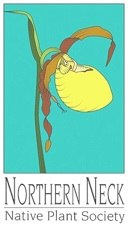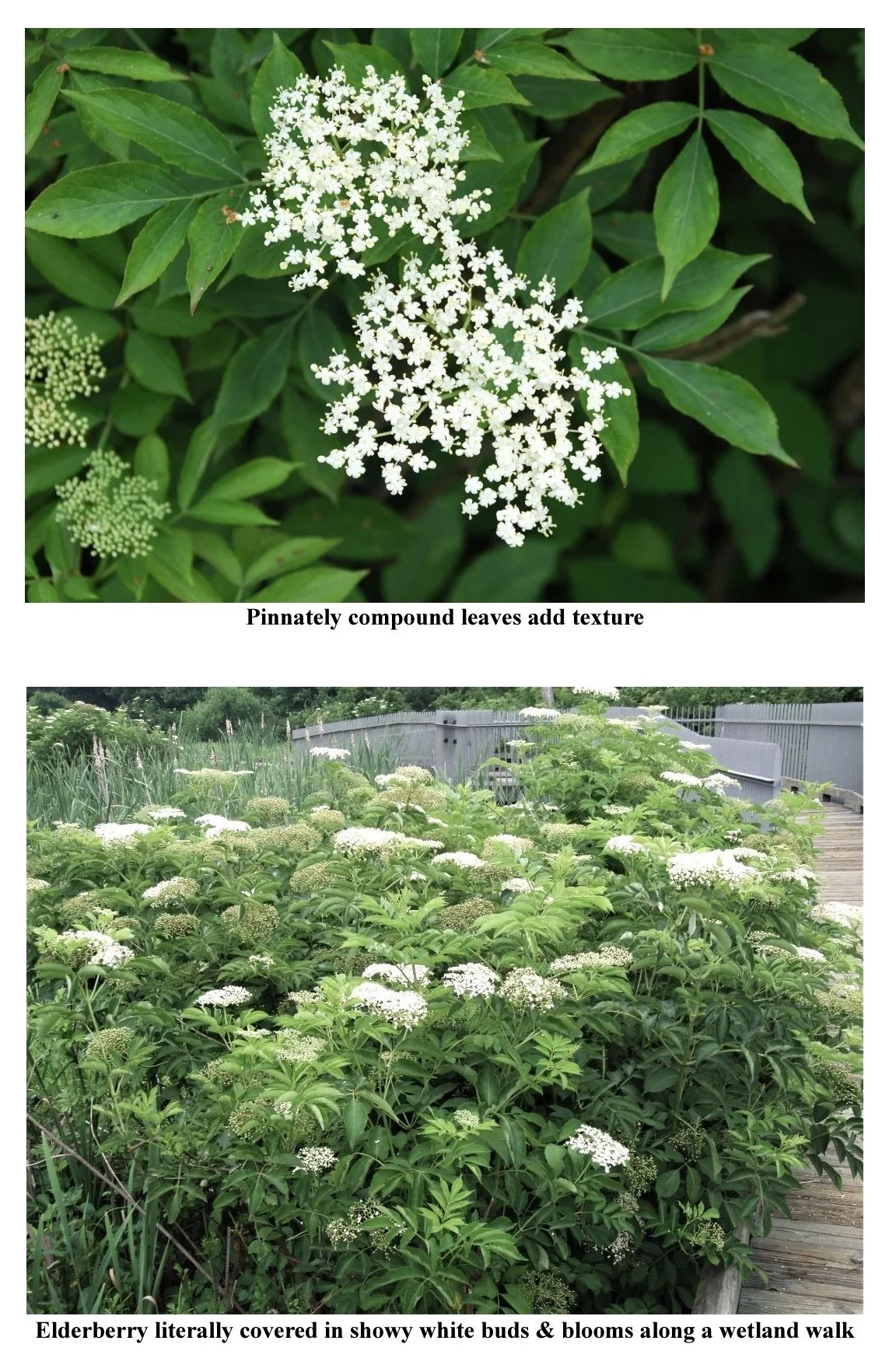Plant of the Month June 2025: American Elderberry
The showy white flowerheads of American Elderberry can reach up to 10% across American Elderberry is a common, deciduous shrub that lights up our landscape from mid-May through June with huge and profuse clusters of white flowers that literally form a lacy veil over the shrub. Each flower is only about ¼" across but is held in large, flat-topped or slightly domed-shaped clusters that can be up to 10" across, creating an incredibly showy spectacle! The flowers have a light, lemon-like fragrance mixed with a hint of musk and bloom for weeks on end. Once pollinated, the showy flowers ripen into eye-catching clusters of purplish-black fruit in late summer and fall literally weighing down the branches. Each drupe is small (about ¼" in diameter) on reddish stalks. The juicy fruit is edible when cooked and has long been a favorite for making pies, jams and jellies and even Elderberry Wine and pancakes. This member of the Viburnum family has opposite, pinnately compound leaves with 5 - 11 (usually 7) sharply toothed, elliptical leaflets with pointed tips. It leafs out very early in spring and may turn a handsome yellow to gold in fall. The overall habit of this shrub is somewhat loose and spreading with arching tan to grayish stems dotted with lenticels.
American Elderberries occur throughout eastern North America and in every county in Virginia except at high elevation in the mountains. It is quite adaptable to a range of soils from clay to silt to sand, wet to dry and grow well in both full sun to part shade. Preferring rich, moist, slightly acidic soils, it often spreads by root suckers into thickets. Habitat preference tends to be damp to wet fields, damp roadside ditches, swamps and occasionally low moist forests. On my property it grows readily around the edges of a wetland pond and my upper shoreline where its suckering habit is a real boon for stabilizing the soil and preventing erosion. Its ability to tolerate both wet and dry soil works perfectly in these difficult sites. Happily seeding into my borders, it earns a welcome because of its extreme showiness and appeal to abundant wildlife.
Elderberry is perfect when planted in informal hedges or massed along riparian buffers, ponds, or streams and even rain gardens where it will help stabilize the soil but can also be used in wildlife, children's, pollinator, and edible gardens. It is versatile and easy to grow plus it can be pruned back hard or selectively to control size and encourage more blooms or control suckering.
The showy, fragrant flowers offer a pollen reward to a variety of small pollinators and its foliage serves as a host for several butterflies and moth caterpillars including Cecropia moths, our largest moth. The arching branches and suckering habit make it an ideal nesting habitat for Quail and songbirds while the juicy fruit is a favorite of not only quail but Yellow-belled Sapsuckers, Cedar Waxwings, Northern Cardinals, Song Sparrows and many more. Small mammals and even Box and Mud Turtles relish the fruit! It is truly a wildlife bonanza as well as a showstopper for all of us.
American Elderberry has long been used for a variety of medical uses including as an immune system stimulant and research has shown it to have some anti-viral properties including for relief of colds, flu and respiratory and sinus ailments. While I can't personally testify to its many medical properties, I can vouch for many happy hours spent collecting buckets of elderberries as a young biologist and to the delicious jams, pies and even Elderberry wine that we made and shared freely. Every year I love this shrub more and certainly must have nearly a dozen around my property serving in many different garden uses from specimen to shoreline, wetland edges, to border feature. This shrub is so versatile and adaptable, and the flowers and fruit so showy, it is sure to enhance any garden that it graces.



